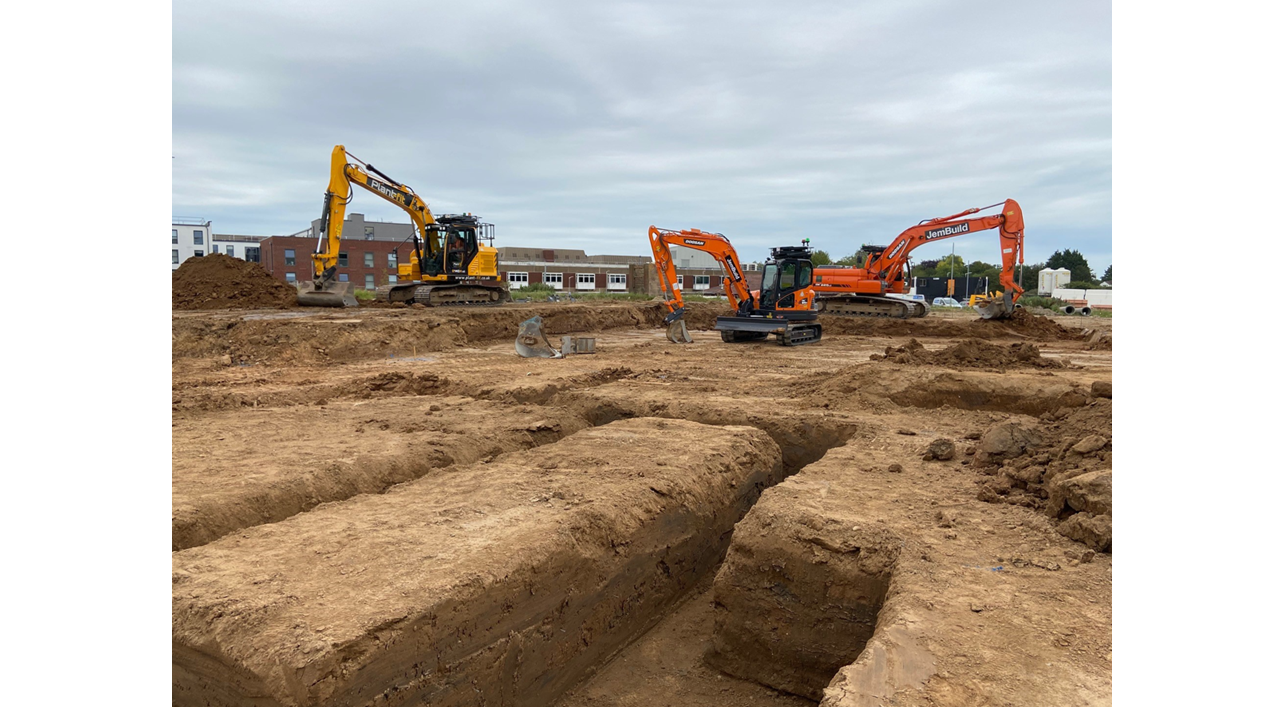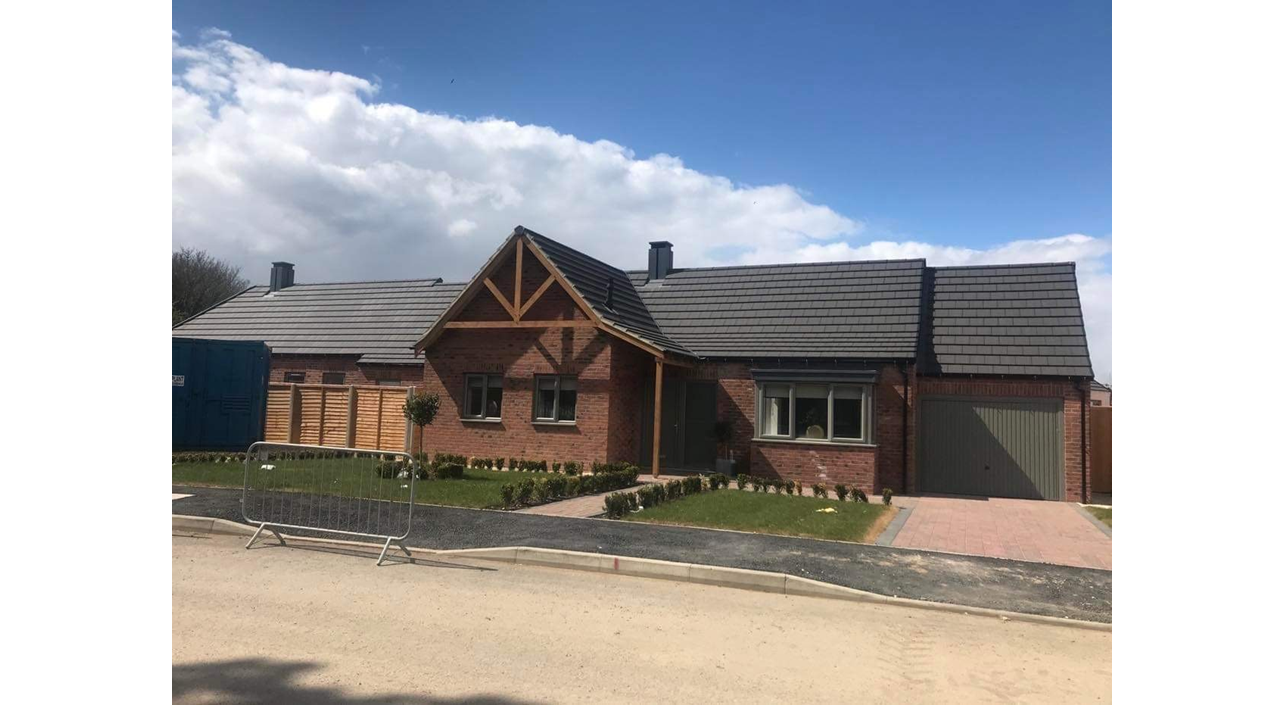How do you overcome obstacles such as an ageing local plan, an unallocated site and several potential viability showstoppers? This case study demonstrates how, with a combination of strong leadership and an ethos of problem-solving and partnership working, even the most difficult brownfield sites can be brought forward and successfully delivered. September 2022.
Introduction
Land at Diana Princess of Wales Hospital, Grimsby
How do you overcome obstacles such as an ageing local plan, an unallocated site and several potential viability showstoppers?
“It’s about the people not the process. If we hadn't worked together for such a long time and built up those relationships, I feel like it would have been a much more challenging process” (Local Planning Authority)
-
In 2011 this 6.34 ha site became surplus to the requirements of the Northern Lincolnshire and Goole Hospitals NHS Foundation Trust (the Trust). - The site comprised derelict hospital buildings and ancillary structures, a decommissioned helicopter landing pad, nursing accommodation, and a cricket pitch. Asbestos contamination affected the whole site.
- The development formed part of a strategy to reinvest in new staff accommodation. This would help with recruitment and retention to ensure hospital's long-term viability.
- North-East Linc's planning team and the Trust worked together to create an opportunity for both parties. The Trust could realise its staff accommodation ambitions. The council could deliver much-needed housing-led development. The council’s planning team led and coordinated the work and negotiations with the Trust and the developer.
- The site is divided into six zones, five of which were sold to a housing developer (E5 Holdings), and the other retained for development by the Trust.
- In 2018 new accommodation was constructed and it achieved full occupancy within 8 weeks of opening. Construction is currently underway on the first of the five zones sold to the housing developer.
Key Success Factors
Planning:
- De-risking the site by creating a Development Framework. At the time of the initial negotiations, the site was not allocated for housing. The council’s Local Plan was ageing and could hinder development. The planning team saw this as an opportunity, and created a development framework. This included the full site details and the development expectations for potential investors. This reduced the risk posed by the ageing plan, and paved the way for a coherent approach to developing a complex site.
- A Clear, Shared Vision. Planning officers worked to ensure that the aspirations of the Council, the Trust and the Developer were shared and understood by all parties. This helped ensure that each party’s vision could be aligned and kept front of mind when making decisions affecting the development of the site.
- Planning team took ownership for resolving problem. Planning officers acted as problem solvers. They provided the key point for the reconciliation of issues in bringing the site forward and its delivery.
-
Creativity, flexibility and balance. A new retail unit was proposed at reserved matters stage on one of the Zones. The planners had a balance to achieve between:
- the evidence of need that had emerged
- accommodating the 'new' need without prejudicing other retail developments coming forward
- the fact that the original allocation of the site was for housing.
Planning committee weighed things up and approved the new retail unit. This demonstrated a willingness to be flexible and respond to changing circumstances/evidence - Continuity of staff – the ability to retain the involvement of staff over a number of years instilled confidence and enabled effective and open communication.
Key Planning Tools
- Development framework (Local Planning Authority Led).
- Strategic masterplan (Developer Led), submitted with the outline application.
- Reserved matters applications for the 6 individual zones of the development site.
Site Identification
- Getting ahead of the Local Plan site allocations – the site was originally allocated in the previous local plan as a Community Use Area. The development framework created in advance of work on updating the local plan identified the site as suitable for housing development.
Site Viability
- Understanding partners’ requirements – central to the success of the redevelopment was ensuring that the trust received sufficient receipts from sale of the land to enable re-investment in improve staff accommodation.
- Expect initial land remediation and mitigation requirements to change - the costs of contamination remediation changed as the site developed and new challenges emerged. . Planners had to be flexible and prepared to create different solutions as the development progressed.
- Being prepared to intervene directly - the planning team had to involve itself directly in brokering a deal on highways mitigation to ensure the scheme’s viability.
Leadership & Governance
- Strong leadership and coordination – the planning team marshalled the input of experts across the local authority and worked with the developer and other stakeholders in resolving issues.
- Commitment to working with each of the key stakeholders - the LPA, the Trust and the housing developer committed to a tripartite approach to bringing the development forward.
- Effective negotiation – the planning team will often have to focus on balancing requirements when negotiating potential site issues - this case involved securing highways improvements and ensuring the retention of sports facilities. .
Lessons Learned
Key Lessons:
-
Bringing forward complex sites is a learning process for all. The Trust observed that it would have saved time to work through some development scenarios with the planners earlier. Their initial approach was to try and get as many houses on the site as possible. Planners rejected this and worked with the trust on a different approach.
- Site viability issues can bite at several points in the planning process. Issues like contamination are usually identified early on, but the scale can be difficult to judge. Often the scale or type of contamination becomes clearer as the project progresses. Sometimes it changes altogether or new issues emerge. Taking a cautious and open approach to identifying issues and mitigation, can help avoid 'surprises' holding things up later.
- Elements beyond the realm of planning can cause major shifts in direction. Large developments take time to deliver, and external factors can and will change. Changes in social care funding provision may impact reserved matters applications coming forward on some of the zones.
- Effective and open communication is fundamental to success. It doesn’t just happen, there needs to be a commitment to lead on this – in this case the planning team.
- Don’t leave it to the experts. The planning team involved itself in understanding the issues at each stage and were well placed to resolve any problems, “I think too often we say…contamination… that's environmental health and junctions - that's highways. The process is about us being involved at every stage and understanding what the issue is, because it's us that have to resolve these things with the developer and be able to communicate that in a way that's effective” (LPA).


